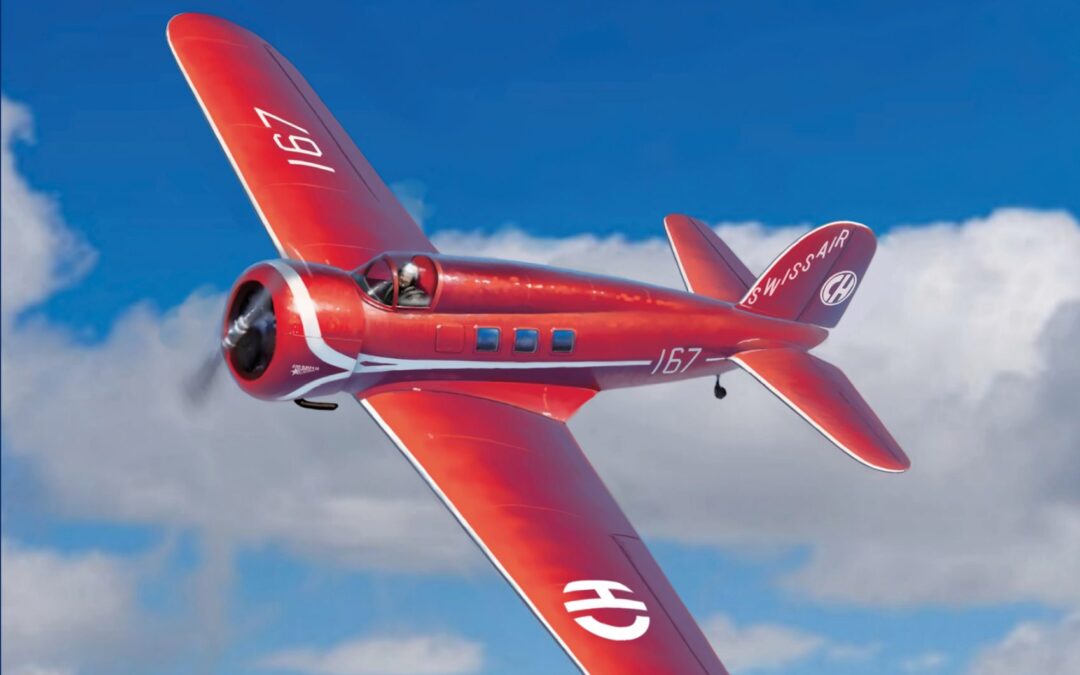
The Few’ will be a series of titles where the focus will be on airliners that were only built or operated in a few numbers and flew for a particular airline. This book about the Lockheed Model 9B Orion operated by Swissair is the first title in this series.
At the time of the introduction in Europe of the Lockheed Model 9B Orion, most airliners in service flew at an easy pace of 140km/h. Swissair, the national airline of Switzerland, introduced now an aircraft that could fly at a speed of maximum 360km/h, but the usual cruising speed was around 260 to 280km/h. Nevertheless, the little wooden wonder from the USA flew 50% faster than any other aircraft – a revolution in European aviation. Swissair decided to operate the aircraft with just four passenger seats, as mail was far more important and lucrative to carry.
In this book, the author has described the history of the aircraft with many new details and photographs. Hubert Cance has made a cutaway of the aircraft, while Toni Ruffiner made colour profiles.
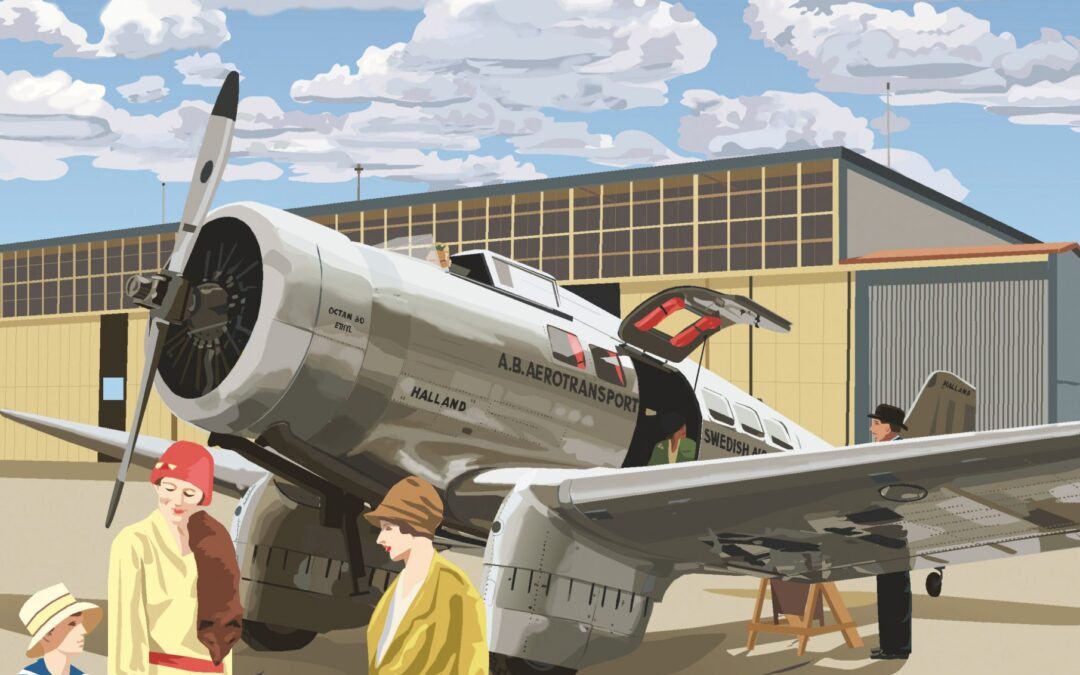
At the beginning of the 1930’s, night air mail services started to become more and more important for European Airlines. Navigation and safety equipment improved drastically and aircraft became much more economical to fly. The introduction of the fast Lockheed Orion by Swissair in April 1932 led to a true revolution within air transport. “Everyone wanted aircraft that flew faster than their existing obsolete Fokker- or Junkers aircraft.
In Sweden, AB Aerotransport’s Managing Director, Carl Florman, became interested in faster airliners as well. In May 1933, Bernt Balchen introduced them to the Northrop Gamma and was interested in a similar Aircraft for his airline. Offers were requested through Northrop representative, Norwegian aviator Bernt Balchen, AB Aerotransport ordered in October 1933, a passenger Delta 1C and in January 1934, a mail aircraft, the Delta 1E.
The operation of both aircraft was marked by problems and challenges for the pilots. It took them some time to master the aircraft. The Delta 1E never entered service, as it crashed on a trial mail flight. In 1937, ABA sold the Delta 1C to Spanish airline Lineas Aereas Postales Espaňolas – LAPE. It remained in civil and military service until well after World War II.
After intensive research, the author (Rob J. M. Mulder) describes in detail the history and operation of these two aircraft. But Bernt Balchen’s role in the story and the visit of a Northrop Gamma to Norway is described. Also, we learn about the history and development Northrop Alpha, Beta and Gamma, as well as the other Deltas. In addition, the military types and their use in Norway and Sweden and other countries is described. The book is illustrated with many photographs, tables, colour profiles by Juanita Franzi, Nils Mathisrud and Torstein Landström Wallmo. Mats Averkvist supplied drawings and was a great support for the author.
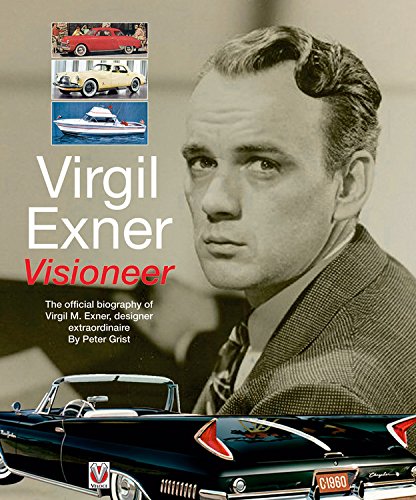
The story of a man that brought his own personal style to the world of industrial design, from automobiles to powerboats. Some 50 years after his design masterpieces wrested styling leadership away from General Motors – Harley Earl. Thirty four years after his untimely death, Virgil Exner’s name still remains inexorably linked to the Chrysler Corporation in the minds of car enthusiasts worldwide.
For an all too brief period, Exner’s name epitomised all that was great and exciting in America. His thrilling automobile designs from the mid-fifties took the world by storm and put Chrysler at the top. His work was nothing less than a revolution. Until the mid-fifties, engineers, creating cars that were reliable but invariably staid and conservative, had dominated auto design. Exner introduced to Chrysler, firstly with his ‘idea cars’ then with production models, vehicles that were wanted for their looks but at the same time, were soundly engineered; automobiles that carried classic proportions and gave the illusion of movement even whilst stationary. His design of the 1947 Studebaker established the design pattern for all modern cars and was a huge success. Along with automobile styling, his talents stretched to many other areas of industrial design, from trains to trucks and boats to Buicks.
This book gets behind the character of the man, his strengths and weaknesses, his personal tragedies and his vision of modern transport. Uncover why he set up in competition with Raymond Loewy, get the real facts behind historic inaccuracies and why he was made scapegoat for the sales disaster of the early sixties, Then delight in his fine artwork and his love of motor racing. With many previously unseen works of art and family photos among the 150 colour images throughout this is a unique and fascinating insight into a pivotal player in the development of the modern automobile.
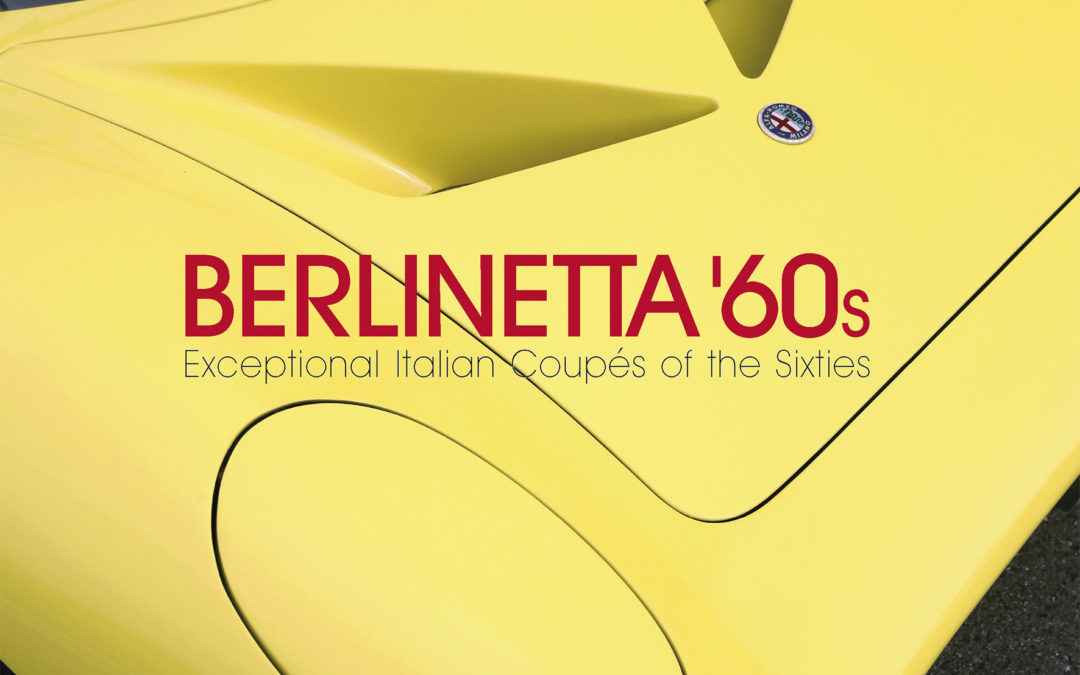
Exceptional Italian Coupés of the Sixties
Following his portraits of the coupés of the 1950s published in 2017, Xavier de Nombel turns his cameras to the ‘Sixties to bring us the most beautiful Berlinettas produced during that decade, which he has tracked down all over the world. From the fiery little Osca to the revolutionary Carabo, employing stunning photography, he presents his personal vision of a period in which styling gave way to design.
Around his personal favourites, Christian Descombes relates the upheavals which Italian coachbuilding went
through as it evolved from craftsmanship to industrial production, leaving behind its clientele of well-off enthusiasts to offer its expertise to the major international car makers. Giorgetto Giugiaro, undoubtedly one of the leading players in this period, shares a remarkable account from inside, bringing to light the expressions of Italian automotive design since the post-war years.
hardcover in a slipcase
Photos: 442 in colour
Pages: 320
Language: English
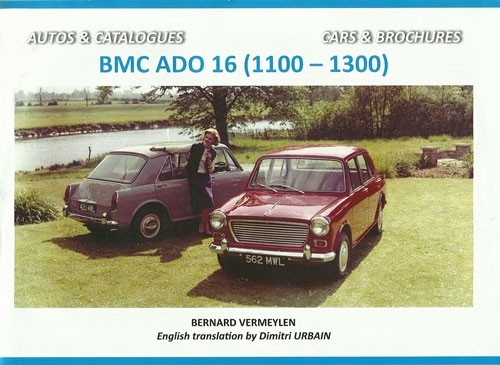
The BMC ADO 16 (Austin Drawing Office 16) Morris 1100 car was revealed to the international motoring press on 15th August 1962, a larger and worthy companion to the BMC Mini which had been launched in 1959 to worldwide acclaim. Both designs were the work of Alec Issigonis and featured transverse engines with the gearbox in the sump, driving the front wheels, groundbreaking technology at the time which has been universally adopted since, though not the gearbox in the sump. A further revolution was the suspension; the Mini had progressive springing by rubber cones, the work of rubber technician Dr. Alex Moulton which, together with rack-and-pinion steering, was responsible for the Mini’s incredible road-holding. The larger Morris/Austin 1100 series cars were fitted with a developed version named “Hydrolastic”. Suspension was still by Dr. Moulton’s rubber cones, but associated with a chamber filled with water and antifreeze and incorporating damper valves, which was connected to similar rear units via pipes and was a form of self-levelling. A unique solution to the problems associated with large differences between laden and unladen weights in small family cars.
Bernard Vermeylen’s fascinating book, with English and French text, studies the design, technologies and development of Issigonis’s and BMC’s hugely-successful ADO 16 design, which lasted for over 10 years and evolved from the Austin/Morris 1100 to the 1300 cars, which in turn were built in a bewildering variety of badge-engineered makes; Vanden Plas Princess, MG, Riley Kestrel and Wolseley, as well as being licence-built in Italy (Innocenti), Spain (Authi), Australia (Nomad), New Zealand and South Africa (Apache). BMC themselves produced GT versions, Traveller and Countryman estate cars and a variety of different spec. models for various markets.
Most of the illustrations in this book take the form of images from factory brochures and press photos, detailing the many changes BMC made to the ADO 16 in the decade it was in production. Specifications of different models, paint colours and sales prices are all listed in Bernard Vermeylen’s book, it is as comprehensive a survey as is possible and particularly interesting for the details published on the many export and licence-built variants of BMC’s 1100/1300 cars.
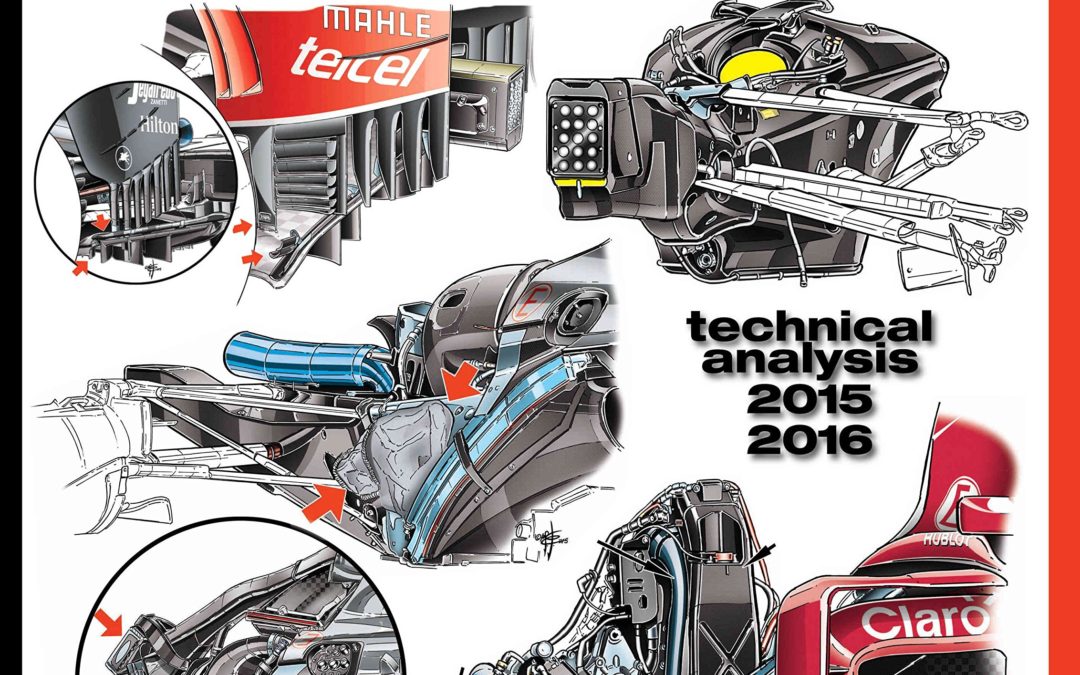
As with previous years, 2015 was one in which Mercedes-Benz dominated both the drivers’ and constructors- championships. The German manufacturer confirmed the technical advantage it had derived from the introduction of the revolutionary power unit, which first appeared in 2014. In place of Red Bull, which fell into disgrace after a media conflict with engine supplier Renault, it was Ferrari that attempted to stand up to the Silver Arrows. Side issues were the stories of a Williams wanting to come back and battle for the title; McLaren with a new but not very effective Honda engine, which touched the lowest point in the Japanese manufacturer’s long history in F1; and the other leading teams of a season that ended with the official announcement of Renault’s return, having acquired Lotus. Offering a precise analysis of this latest F1 championship, especially from the technical point of view, there is once again Giorgio Piola. A hundred or so all-colour illustrations document the development of the various cars throughout the Formula 1 World Championship, and offer – as always – a wealth of information anticipating the 2016 season.

The story of a man that brought his own personal style to the world of industrial design, from automobiles to powerboats. Some 50 years after his design masterpieces wrested styling leadership away from General Motors – Harley Earl. Thirty four years after his untimely death, Virgil Exner’s name still remains inexorably linked to the Chrysler Corporation in the minds of car enthusiasts worldwide.
For an all too brief period, Exner’s name epitomised all that was great and exciting in America. His thrilling automobile designs from the mid-fifties took the world by storm and put Chrysler at the top. His work was nothing less than a revolution. Until the mid-fifties, engineers, creating cars that were reliable but invariably staid and conservative, had dominated auto design. Exner introduced to Chrysler, firstly with his ‘idea cars’ then with production models, vehicles that were wanted for their looks but at the same time, were soundly engineered; automobiles that carried classic proportions and gave the illusion of movement even whilst stationary. His design of the 1947 Studebaker established the design pattern for all modern cars and was a huge success. Along with automobile styling, his talents stretched to many other areas of industrial design, from trains to trucks and boats to Buicks.
This book gets behind the character of the man, his strengths and weaknesses, his personal tragedies and his vision of modern transport. Uncover why he set up in competition with Raymond Loewy, get the real facts behind historic inaccuracies and why he was made scapegoat for the sales disaster of the early sixties, Then delight in his fine artwork and his love of motor racing. With many previously unseen works of art and family photos among the 150 colour images throughout this is a unique and fascinating insight into a pivotal player in the development of the modern automobile.
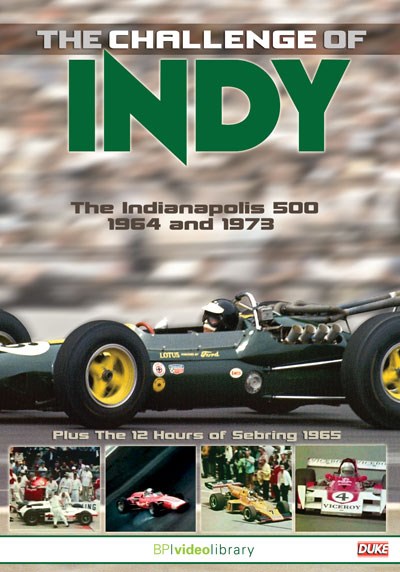
Race fans – Start your Engines and get ready to experience The Challenge of Indy!
The Indianapolis 500 is one of the greatest motorsport events, providing a unique challenge for driver, machine and team on the high-speed banked oval at the world-famous Brickyard. This DVD features two action-packed archive films charting races which are etched into the memories of US motorsport fans – although for very different reasons.
We open with the 1964 Indy 500, following practice, qualifying and the race as the established American stars battle to hold off a European invasion led by Formula One star Jim Clark and his Ford-powered, Colin Chapman-designed Lotus. The rear-engined Lotus was on the verge of revolutionising American motorsport forever, with Clark nudging the track record up towards 160mph. This would be the final year of domination for the front-engined machines of US greats like A.J. Foyt and Parnelli Jones, and what a last year! The thrilling action footage captures the slides, crashes, spins and wheel-to-wheel dicing as Foyt laps the entire field in his Sheraton Thompson Special. It was a moment of motorsport history, but as this classic film shows, it was also a full-throttle race.
Fast forward almost a decade for our second film, Going to Extremes. This is the story of the bizarre 1973 Indianapolis 500, which took three days to run and even then didn’t go the full distance. Once again we are treated to practice and the gripping drama of making the cut in qualifying before turning our attention to race day. Among the stars lining up are legends like Foyt, Mario Andretti, Al Unser and Bobby Unser – and with the first 200mph lap in sight, there is the prospect of a great Indy 500. However, what should have been a great race turned into three frustrating days of waiting before the fans were able to enjoy a single green flag lap. When the racing did get under way, it was breathtaking, and out superb archive footage brings you all the action.
There’s also a chance to enjoy another classic American motorsport event, the 12 Hours of Sebring. The film 12 Hour Grind takes us back to the rain-hit 1965 running of this classic sports car race, which sees Dan Gurney, Graham Hill, Paddy Hopkirk, Ritchie Ginther and many more stars doing battle in a variety of roaring racing machines, including Ford GT40s, AC Cobras and stunning Chaparrals.
“If you can’t wait for May’s Indy 500, relive the event’s glory days with this DVD. It covers great races from 1964 and 1973 from the infamous Brickyard, with footage of Brits like Jim Clark, Graham Hill and Paddy Hopkirk, but strangely the rain-hit 1965 Sebring 12 Hours race is a bonus feature” Auto Express
“This DVD captures the best footage from two of the greatest races ever held at the famed Brickyard, plus bonus footage from the 1965 12 hours of Sebring. the 1964 Indy 500 was the last year a front-engined car won the race, and the bizarre 1973 Indy 500 took three days to run and didn’t even go the full distance. Watch the full story, from practice to the chequered flag, of these spectacular events” Autocar
“With colour films of practice for the ’64 and ’73 500 miles, and bonus material covering the run-up to the ’65 Sebring 12 Hours, there’s plenty to enjoy here. We loved the footage of Pole Day at the Brickyard in ’64, where ‘James Clark Jr’ took the fight to the roadsters. Great to see Smokey Yunick’s Hurst Floor Shift Special, too”










